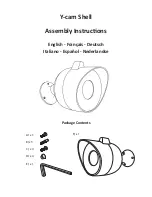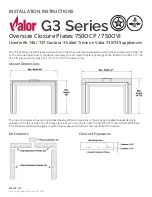
Data Files
©
2016-2017 SR Research Ltd.
97
This specifies the tracking mode used (pupil-only vs. pupil-CR mode), sampling
rate (250, 500, 1000, or 2000 Hz), file sample filter (0 – filter off; 1 – standard
filter; 2 – extra filter), link/analog filer (0 – filter off; 1 – standard filter; 2 – extra
filter), and the eyes (L, R, or LR) recorded in the trial.
•
ELCLCFG <mount configuration>
This reports the mount configuration used to do data collection.
Configuration Typical Setup
MTABLER
Head-Stabilized Mode, Monocular
BTABLER
Head-Stabilized Mode, Binocular/Monocular
RTABLER
Remote mode, Target Sticker, Monocular
RBTABLER
Remote mode, Target Sticker, Binocular/Monocular
•
GAZE_COORDS <left> <top> <right> <bottom>
This reports the pixel resolution of the tracker recording. Left, top, right, and
bottom refer to the x-y coordinates of the top-left and bottom-right corners of
display.
•
THRESHOLDS <eye> <pupil> <CR>
This reports the pupil and CR thresholds of the tracked eye(s).
•
ELCL_PROC <pupil tracking algorithm>
This reports the pupil fitting processing type (i.e., ELLIPSE or CENTROID).
Immediately following a START line, several lines of data specifications may be
present. These lines contain more extensive data than the START line about
what data can be expected in the START...END block. These are most easily
processed by creating a set of flags for each possible data option (left-eye
events, right-eye samples, sample velocity, etc.), clearing these when the START
line is encountered, and setting the appropriate flags when keywords ("LEFT",
"VEL", etc.) are encountered in a data specification line.
•
PRESCALER <prescaler>
If gaze-position data or gaze-position resolution is used for saccades and events
are used, they must be divided by this value. For EDF2ASC, the prescaler is
always 1. Programs that write integer data may use a larger prescaler (usually
10) to add precision to the data.
•
VPRESCALER <prescaler>
If velocity data is present, it must be divided by this value. For EDF2ASC, the
prescaler is always 1. Programs that write integer data may use a larger
prescaler (usually 10) to add precision to the data.
















































